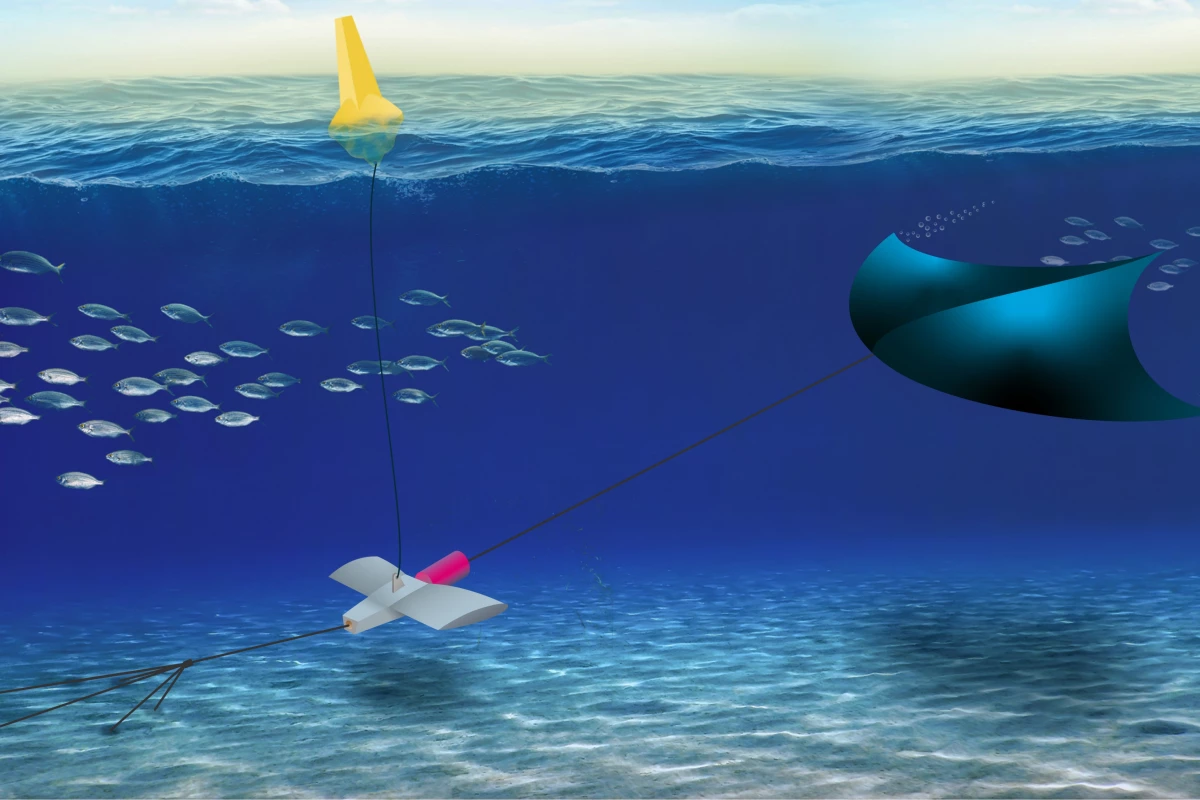We've already heard about renewable energy systems that use aerial kites to generate electricity via the wind. Well, the Manta system is kind of similar, although it uses an underwater kite that "flies" in tidal or river currents.
Manta was conceived by scientists at the California-based SRI International research institute, who recently received a three-year, US$4.2 million award to develop the technology in partnership with colleagues at the University of California, Berkeley. That award was granted by the US Department of Energy’s Advanced Research Projects Agency-Energy (ARPA-E), as part of its Submarine Hydrokinetic And Riverine Kilo-megawatt Systems (SHARKS) program.
At the heart of the system is a polymer-composite-coated foam kite, the shape of which was inspired by the manta ray. That kite is attached to a reeled tether, which is anchored to the floor of the ocean or a river in an area where there are strong currents. The tether reel is equipped with both an electric motor and a generator.
At the start of each of its runs, the kite is angled so that it catches the full force of the current, allowing it to be carried downstream by that current. The reel spins quickly as it releases the tether, spinning up the generator in the process – this generates electricity, which could be stored in a battery or fed directly into the municipal grid.
Once the kite reaches the end of its tether, it turns so that it presents a more streamlined profile to the current. The reel motor then winches it back in, so that it can subsequently perform another downstream run. Although the winching process does require some energy, the amount is reportedly much less than the system generates. According to a report on IEEE Spectrum, SRI is aiming for an average output of about 20 kilowatts per kite.
As compared to other tidal power systems that incorporate structures such as underwater turbines, Manta is claimed to be considerably cheaper and easier to install, plus its kite can simply be reeled in when there's a chance that it may interfere with human activities or nearby wildlife. That said, because the kite itself is quite lightweight, its designers believe that it shouldn't present much of a hazard even when it is moving.
SRI has stated that it now plans on building and operating a prototype to demonstrate the Manta technology, although we're still waiting to hear back regarding where it will be located and when it will be completed.
Source: SRI International via IEEE Spectrum




